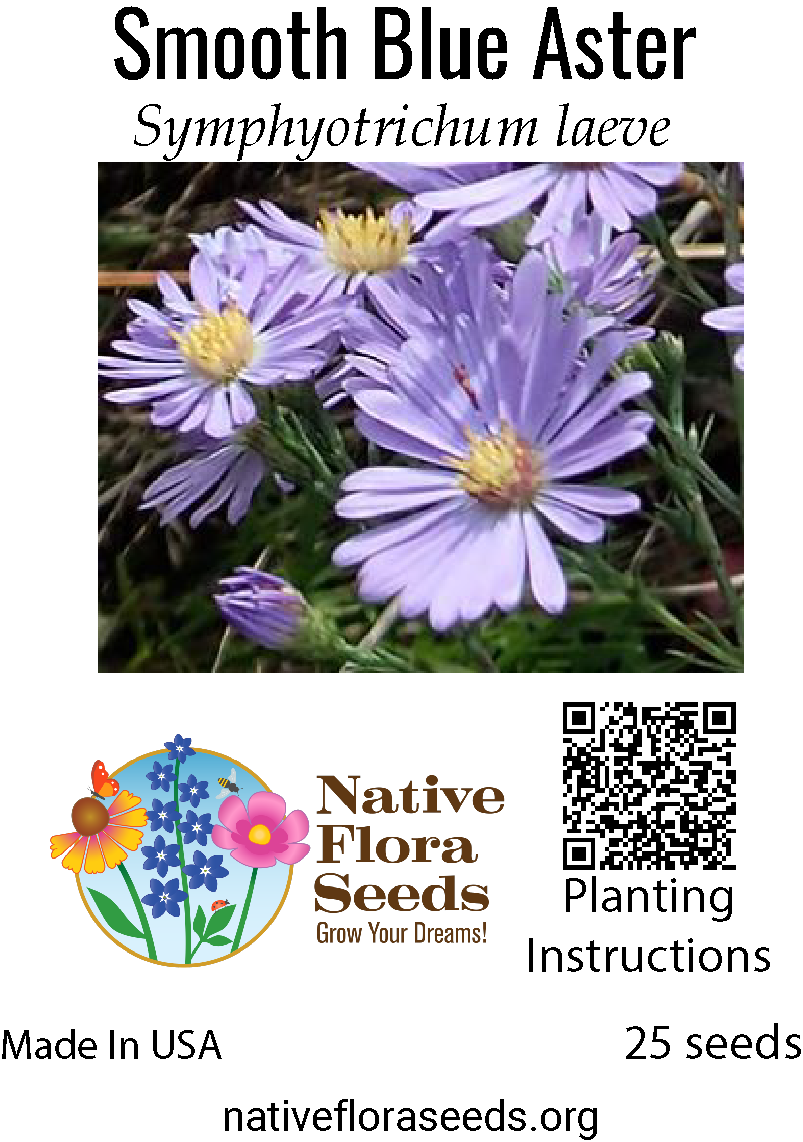Site Selection
Sunlight: Smooth Asters prefer full sun to partial shade. They'll flower best with at least 6 hours of sunlight, but can tolerate some shade, especially in hot climates.
Soil: Well-drained soil is essential. They can adapt to various soil types, including clay, loam, and sandy soils, as long as drainage is good. Amend heavy clay with compost or other organic matter.
Space: Smooth Asters can range in height from 1-3 feet, and spread via rhizomes. Consider the mature size of the variety you're growing when choosing a location.
Direct Sowing Outdoors
Fall Planting: Fall sowing is ideal. It allows seeds to naturally stratify over winter and germinate in spring.
Preparation: Clear the area of weeds and debris. Lightly loosen the top layer of soil.
Planting Depth: Sow seeds very shallowly, barely covering them with a thin layer of soil or sand, as they need light to germinate.
Watering: Keep the soil consistently moist, but not soggy, until seedlings emerge.
Spring Planting: Spring sowing is also possible.
Preparation: Prepare the seedbed as described above.
Planting Depth: Sow seeds as described above.
Watering: Water regularly until seedlings are established.
Starting Seeds Indoors
Timing: Start seeds indoors 6-8 weeks before the last expected frost in your area.
Stratification: While not strictly required, cold stratification can improve germination rates.
Mix seeds with slightly moistened sand or vermiculite.
Place the mixture in a sealed plastic bag.
Refrigerate for 2-4 weeks.
Planting:
Use a seed starting mix. Sow seeds very shallowly in seed starting trays or pots.
Keep the soil moist and provide warmth (70-75°F) for germination. Light is important.
Transplanting: Once seedlings have a few sets of true leaves and the weather has warmed (after the last frost), transplant them outdoors. Harden them off gradually before transplanting.
Maintenance Tips
Watering: Once established, Smooth Asters are relatively drought-tolerant. Water deeply but infrequently, allowing the soil to dry slightly between waterings.
Fertilizing: They don't require heavy fertilization. A light application of a balanced fertilizer in spring is usually sufficient.
Pinching: Pinching back the tips of stems in late spring or early summer can encourage bushier growth and more flowers.
Staking: Taller varieties may need staking to prevent them from flopping over, especially in windy areas.
Deadheading: Deadheading spent flowers can prolong the blooming period and prevent self-seeding if you don't want it to spread.
Dividing: Established clumps can be divided every few years to rejuvenate the plants and control their spread.
Invasiveness
Smooth Asters are native to North America and are not generally considered invasive in the same way as some non-native asters. However, they can spread through rhizomes and self-seeding, potentially becoming aggressive in some gardens. If you want to control its spread, remove seed heads before they mature and divide clumps regularly.
Additional Notes
Scarification: Scarification is not usually necessary.
Pollinators: Smooth Asters are excellent for attracting butterflies, bees, and other pollinators to your garden, especially late in the season when other flowers are fading.
Deer Resistance: They are relatively deer-resistant.
Important Considerations
Good drainage is key to preventing root rot.
Provide adequate spacing to allow for air circulation.
With these guidelines, you'll be well on your way to enjoying beautiful Smooth Asters in your garden!



